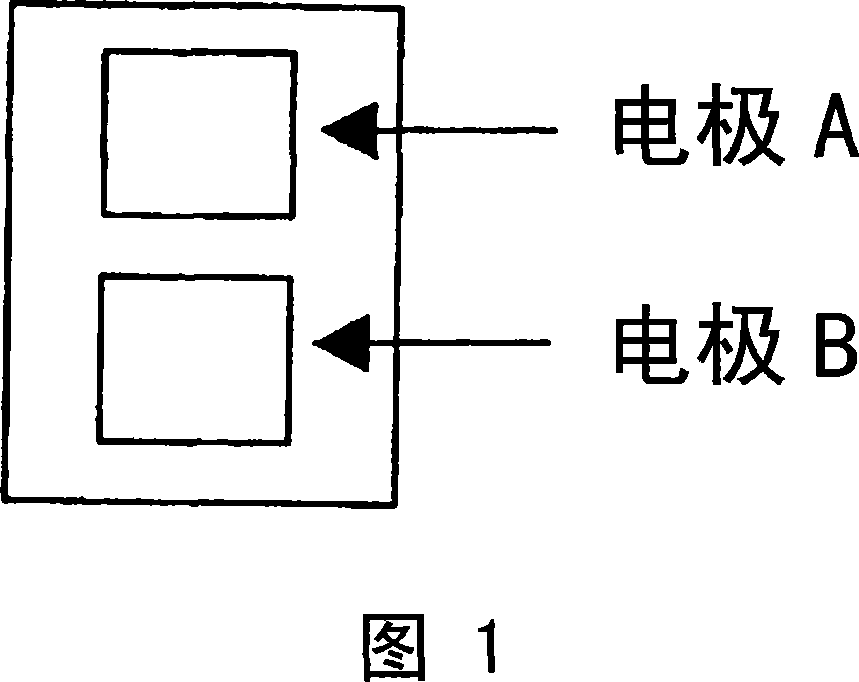Liquid crystal aligning agent, liquid crystal aligning film and liquid crystal display device
A technology of liquid crystal aligning agent and liquid crystal aligning film, applied in the directions of liquid crystal materials, chemical instruments and methods, instruments, etc., can solve the problems of good enough performance and achieve the effect of excellent printing characteristics
- Summary
- Abstract
- Description
- Claims
- Application Information
AI Technical Summary
Problems solved by technology
Method used
Image
Examples
Synthetic example 1
[0150] 112g (0.50 mole) of 2,3,5-tricarboxycyclopentylacetic dianhydride as tetracarboxylic dianhydride and 1,3,3a,4,5,9b-hexahydro-8-methyl-5- (Tetrahydro-2,5-dioxo-3-furyl)naphthalene[1,2-c]furan-1,3-dione 157g (0.50 mol), p-phenylenediamine as diamine compound 96g (0.89 mol), 25 g (0.10 mol) of diaminopropyltetramethyldisiloxane, and 13 g (0.020 mol) of 3,6-bis(4-aminobenzoyloxy)cholestane, as monoamine 8.1 g (0.030 mol) of n-octadecylamine was dissolved in 960 g of N-methyl-2-pyrrolidone and reacted at 60° C. for 6 hours. A small amount of the obtained polyamic acid solution was separated, and NMP was added to measure the viscosity of the solution with a solid content concentration of 10%, which was 60 mPa·S. Then, 2700 g of N-methyl-2-pyrrolidone was further added to the obtained polyamic acid solution, and 396 g of pyridine and 409 g of acetic anhydride were added, followed by dehydration and ring closure at 110° C. for 4 hours. After the imidization reaction, replace ...
Synthetic example 2
[0152] 196 g (1.0 mol) of 1,2,3,4-cyclobutanetetracarboxylic dianhydride as tetracarboxylic dianhydride, 2,2'-dimethyl-4,4'-diamine as diamine compound 212 g (1.0 mol) of aminobiphenyl was dissolved in 370 g of N-methyl-2-pyrrolidone and 3300 g of γ-butyrolactone, and reacted at 40° C. for 3 hours. About 3700 g of a solution of polyamic acid (this is referred to as "polyamic acid (B-1)") having a solution viscosity of 160 mPa·S was obtained.
Synthetic example 3
[0154] 10 g (0.051 mol) of 2,7-diaminofluorene, 3.8 g (0.041 mol) of epichlorohydrin, 100 ml of tetrahydrofuran, and 4.5 ml of water were mixed, and heated and stirred at 80° C. for 4 hours. After lowering the reaction temperature to 60° C., 10 g of a 50% NaOH aqueous solution was added dropwise. After heating and stirring for 4 hours, unreacted epichlorohydrin was distilled off under reduced pressure. The residue was separated and washed with toluene / water, and the solvent was distilled off to obtain 13.9 g of the target epoxy substrate (C-1).
PUM
| Property | Measurement | Unit |
|---|---|---|
| thickness | aaaaa | aaaaa |
| viscosity | aaaaa | aaaaa |
Abstract
Description
Claims
Application Information
 Login to View More
Login to View More - Generate Ideas
- Intellectual Property
- Life Sciences
- Materials
- Tech Scout
- Unparalleled Data Quality
- Higher Quality Content
- 60% Fewer Hallucinations
Browse by: Latest US Patents, China's latest patents, Technical Efficacy Thesaurus, Application Domain, Technology Topic, Popular Technical Reports.
© 2025 PatSnap. All rights reserved.Legal|Privacy policy|Modern Slavery Act Transparency Statement|Sitemap|About US| Contact US: help@patsnap.com



